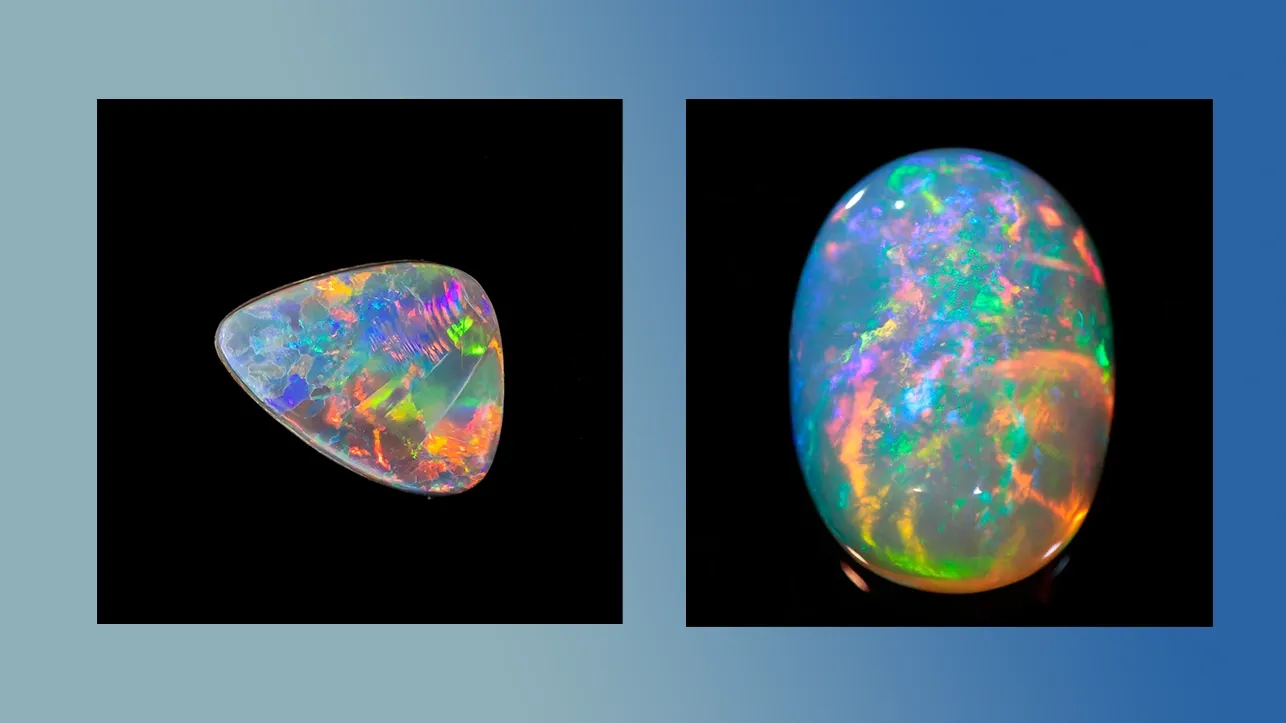Why Is Opal Not A Mineral

Opal, with its mesmerizing play of colors, has long captivated the hearts of gem enthusiasts worldwide. However, there's a curious fact about opal that sets it apart from other gemstones: it's not a mineral. While opal shares some characteristics with minerals, its distinct nature and formation process categorize it differently. In this blog post, we'll explore why opal is not considered a mineral and delve into the fascinating world of this extraordinary gem.
1. What Defines a Mineral?
To understand why opal doesn't qualify as a mineral, we must first clarify the criteria for what constitutes a mineral. Minerals are typically defined as naturally occurring, inorganic solids with a specific chemical composition and a crystalline structure. They are formed through various geological processes, including cooling and solidification from molten material, precipitation from solution, or metamorphic transformation.
2. Opal's Unique Composition
Opal, while possessing some mineral-like qualities, differs in fundamental ways. It is not crystalline, lacking the ordered atomic structure that characterizes minerals. Instead, opal is composed of amorphous silica, which means its silica particles are randomly arranged, much like glass. This lack of crystallinity sets opal apart from minerals.
3. Hydrated Silica Gel
Opal's formation process adds to its distinctiveness. Unlike minerals, which crystallize from molten materials or precipitate from solutions, opal forms from a unique combination of silica and water. Opal is essentially a hydrated silica gel, where water molecules are trapped within its amorphous structure. This water content contributes to the gem's play of colors, known as opalescence.
4. The Play of Colors
Opal's renowned play of colors, or opalescence, arises from the way it interacts with light. The amorphous structure of opal scatters light in various directions, causing spectral colors to emerge. This optical phenomenon is exclusive to opal and not commonly found in minerals. The iridescent and ever-changing colors are a hallmark of opal's beauty.
5. Opal's Formation
Opal's formation process involves the gradual deposition of silica spheres from a watery solution into voids and cavities in host rocks. Over millions of years, these spheres accumulate and create the opalescent gemstone we recognize today. This process is distinctly different from the crystalline growth of minerals.
6. Opal's Lack of a Crystalline Structure
One of the key distinctions between opal and minerals lies in their atomic arrangement. Minerals exhibit a repeating, ordered crystalline structure, resulting in well-defined crystal faces. In contrast, opal's silica particles are randomly arranged, akin to glass. This lack of a crystalline structure is a fundamental characteristic that excludes opal from the mineral classification.
7. Varieties of Opal
Opal comes in various forms, each with its unique characteristics. Common varieties include precious opal, common opal (also known as potch), and fire opal. Precious opal is the most celebrated variety, famous for its stunning play of colors. Common opal, on the other hand, lacks this opalescence and is primarily milky or translucent. Fire opal is prized for its vibrant red, orange, or yellow hues. This variety within opal further highlights its distinct nature, as minerals typically have a single crystalline form.
8. Opal's Sensitivity to Moisture
Unlike minerals, which are generally stable in various environmental conditions, opal is highly sensitive to changes in temperature and moisture. Excessive heat or rapid drying can lead to opal cracking and losing its play of colors. This sensitivity underscores the unique properties of opal, as minerals are typically more resilient to environmental factors.
9. Opal's Status as a Mineraloid
In geological terms, opal is categorized as a "mineraloid." Mineraloids are naturally occurring substances that resemble minerals but do not meet all the criteria necessary for classification as a true mineral. Opal's amorphous structure, lack of crystallinity, and unique formation process place it firmly in the mineraloid category.
10. Opal's Geological Significance
Opal's distinction as a mineraloid adds to its geological importance. The conditions required for opal formation provide insights into the geological history of the regions where opals are found. Studying opal can yield valuable information about past environments, as it often forms in sedimentary rocks associated with ancient oceans and lakes.
Opal's status as a mineraloid rather than a true mineral underscores its exceptional nature within the world of gemstones. Its amorphous structure, formation process involving water, sensitivity to environmental factors, and diverse varieties collectively set opal apart. This captivating gemstone, with its unique play of colors, continues to be a source of fascination for gem enthusiasts and scientists alike. Opal's enigmatic beauty and geological significance serve as a testament to the complexity and diversity of Earth's natural treasures.
